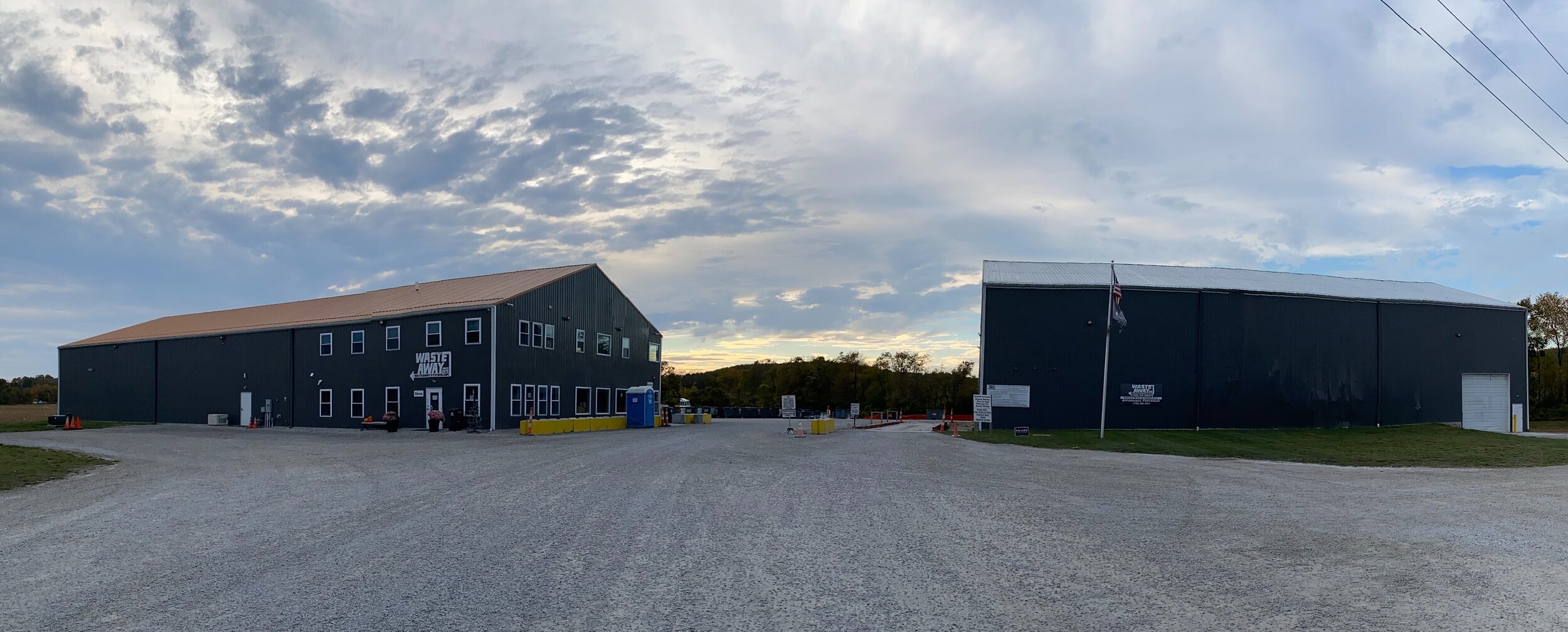Waste Journey: What Happens At a Transfer Station?
Proper waste management practices are an essential part of clean, sustainable communities. Waste transfer stations offer a solution to the unsightly and often smelly issues that come with municipal solid waste disposal. With specialized compaction equipment and a specific, step-by-step process, the waste journey through a trusted municipal transfer station and the transportation of the waste to its final destination is a seamless undertaking.
What Is a Waste Transfer Station?
Waste transfer stations are industrial facilities where solid waste is sent to be staged before heading to its final destination, such as a landfill or waste-to-energy facility. Waste at transfer stations can originate from commercial or residential properties. From the initial unloading of garbage trucks to sorting, separating, and preparing the waste for transport, several different activities take place during waste’s journey through a transfer station.
Waste transfer stations can vary significantly in size, processing anywhere from 1,000 to 100,000 tons of waste or more annually. Smaller regional and municipal waste transfer stations are often conveniently open to accepting both residential and commercial waste materials. Transfer stations keep solid waste moving, helping maintain clean and sanitary conditions within homes, businesses, the community, and the local environment.
Solid Waste Transfer Stations Offer Several Benefits
With careful consideration of the facility’s location and help from a team of waste disposal management professionals, residents of municipalities should receive plenty of fantastic benefits from their local transfer station. The most significant benefits of solid waste transfer stations for members of municipalities often include:
Increased fuel savings
Reduced air pollution
Minimized traffic congestion
Convenient drop-off locations open to the public
Improved safety at landfills and waste-to-energy facilities
Encourages adequate screening of waste items before disposal
Reduced amounts of solid waste materials on commercial sites
Visiting your local waste transfer station is a convenient way to dispose of solid residential waste correctly. Additionally, business operations can take advantage of local transfer stations to manage and even reduce commercial waste on their properties.
Walking Through the Steps of a Transfer Station Waste Journey
The primary purpose of a waste transfer station is to disperse different types of municipal solid waste to their final resting points. Commercial and residential waste will take similar journeys through the waste transfer station before reaching the end of the line at waste-to-energy centers, landfills, or other waste disposal facilities. Here’s how it all works:
1. Arriving At the Transfer Station
First, workers at your local waste transfer station wait for garbage trucks to arrive from various areas throughout the municipality. Upon arrival, all garbage trucks stop at the scale house, where their load of solid waste is weighed and recorded.
Commercial waste scales usually remain in a separate location from smaller scales specified for residential use, allowing individuals with lighter loads to get their waste disposal done quickly.
2. Unloading Waste
After waste is weighed in the scale house, the next step of this journey is to get everything unloaded and prepared for further sorting and processing. Garbage trucks are typically directed to dump their solid waste into one of three areas:
Directly into other vehicles
Onto the facility floor
Into an open outdoor pit
Sometimes, transfer stations utilize heavy machinery such as bulldozers and cranes to quickly move materials across facility areas before continuing to the screening step.
3. Waste Sorting and Screening
Once everything is unloaded from the trucks and placed in the proper area, it’s time to screen and sort the solid waste. This is the time where materials are inspected for any hazardous waste or unauthorized items. When transfer station workers come across things that can’t be thrown away during this step, they are immediately removed from the waste stream.
In addition, if the waste transfer station shares facilities with a material recovery plant, solid waste is screened, and all recyclable materials are sorted out of the load for later recycling. If your local transfer station does not include material recovery solutions, you can acquire professional recycling services from a trusted waste management company.
4. Compacting Sorted Waste
With all of the solid waste materials sorted and screened, the compacting component of the waste journey can occur. Compaction is a process that flattens out waste materials. Transfer stations utilize heavy-duty machinery called compactors to make transportation easier by increasing the amount of waste outbound trucks can carry.
Once the compaction process is complete, the next part of the waste journey is to reload compacted materials back onto trucks to travel to their final destination.
5. Reloading Waste
After waste is processed, compacted, and reloaded onto trucks, it’s ready to move to the next destination. Waste from transfer station facilities is often loaded onto outbound trucks or trailers and sent off until it ultimately winds up in a landfill, at a separate recycling plant, or placed on an ocean-bound barge.
Sorting It All Out
The journey your residential or commercial waste takes through a transfer station is just one small part of a much bigger picture. Citizens play a critical role in the waste disposal process, providing the trash and recycling required to keep a transfer station operating from day to day. In addition, waste management professionals are critical in ensuring that the entire transfer station waste stream continues to function smoothly and efficiently.
As you now know, the benefits of Transfer station facilities are endless. Without waste transfer stations, it would be nearly impossible for communities to remain clean, safe, and sanitary. When community members and commercial businesses commit to correct waste sorting and disposal, the environment remains protected, and the waste journey continues once again!


